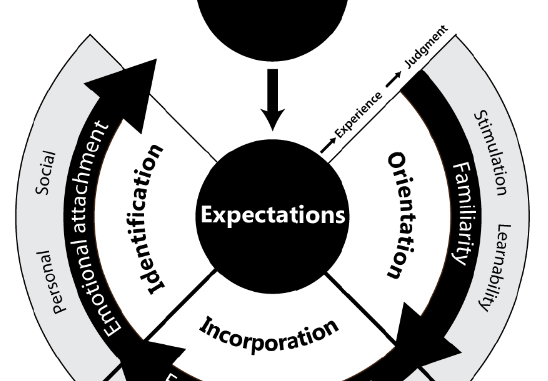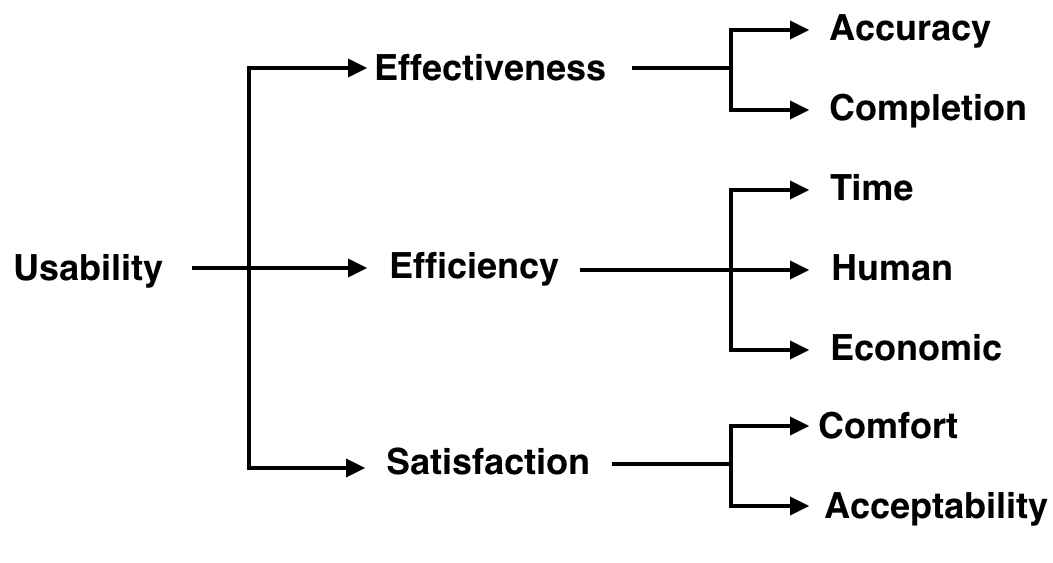
This term appeared in the early 1980s. Previously, the term “user friendly” was used. This use has disappeared because of its lack of clarity and subjective connotation. Usability can be defined as, in its broadest sense, the ease with which a person can use a given object to achieve a given objective. Usability is a central explanatory dimension of the user experience of digital products and services.
The difficulty in grasping the notion of usability consists in the heterogeneity of the professions that have appropriated it (ergonomists, user-centred design, marketing, ethnology, development, artistic direction, etc.) which define it by numerous means (field or laboratory studies, user tests, objective measurements, questionnaires, surveys, etc.) and for purposes that are as much so (brand image, ROI, accessibility, quality approach, improvement of working conditions, etc.). Indeed, since the publication of Usability Engineering (Nielsen, 1993), there have been thousands of references to the usability of information systems, sometimes making it a “catch-all” or, at the very least, debatable concept.
Origin of the usability concept
Historically, ergonomics (from the Greek ergon, work, and nomos, knowledge, rules) has proposed, since the beginning of the 20th century, to study the adaptation of work to humans. The diversity of work situations has imposed its multidisciplinary character on this discipline. In the past, the work was rather physical and repetitive, so the ergonomic field of intervention was mainly the responsibility of doctors and physiologists. With the automation of many procedures and advances in robotics, work has become more mental, mainly involving human activity of control and supervision.
This transformation of work has not been without causing new problems for operators: memory overload, perceptual and attention constraints, etc. The study of usability is therefore in line with work in ergonomics as well as in the history of the diffusion of the computer tool to the general public: expurgated of the “work” dimension of ergonomics (involving aspects such as safety and health), usability will strive to account for the adequacy of an interface with the perceptual-motor, cognitive, and more recently, emotional abilities of individuals. However, while usability has become increasingly synonymous with “overall service quality”, the recent popularization of the notion of user experience has since stripped it of this attribution.
Measuring usability
ISO 9241 defines the international standard for “Ergonomic requirements for office work with visual display terminals”. While not all parts of this standard have been unanimously endorsed by the HCI research community, Part 11 “usability guidelines”, despite its focus on screen terminals for office work, is applicable to a very wide range of human-machine interaction situations. We therefore consider that it is able to light up all types of usability problems relating to the use of digital services, even if they are not intended only for “office” use.
The purpose of ISO 9241-11 is to design and evaluate the usability of products so that their users can achieve the objectives they set for themselves in a given context. Usability is defined as “the degree to which a product can be used by specific users to accomplish specific goals with effectiveness, efficiency and satisfaction in a particular context of use” (our translation).
This recommendation is probably the most advanced usability characterization and evaluation tool. In addition to the rigorous definitions of each concept mentioned, ISO 9241-11 also provides a very precise evaluation methodology, from the specification of tasks, users, goals, environment or equipment, to the measurements to be carried out.

However, our interest in the concept of usability lies in the possibility of operationalizing it in an evaluation process:
- Effectiveness: It is the accuracy and degree of completion with which users will achieve the set goals and sub-goals. It measures usability in terms of the product of the interaction. Accuracy refers to the quality of the result (e.g. number of errors), while completion refers to the quantity produced in relation to goals. It can also be measured as the percentage of goals achieved or the percentage of users who successfully completed the task assigned to them.
- Efficiency : These are the resources committed compared to the accuracy and degree of completion with which users perform their tasks. These resources are reflected both as human effort, time spent, and costs incurred. The idea of human effort requires special attention. It can be both physical and mental. It is entirely possible to make them separate, subjective and objective measures (physiological, for example). Rather than going further in this direction, the standard calls for attention to the workload that different tools, including NASA-TLX, measure accurately. Efficiency is at the same time temporal, human and economic. Each of these measures is the quotient of an efficiency measure divided by the time spent, the workload or the added costs of this work (training, equipment, salaries, etc.):
Time efficiency = effectiveness ÷ completion time
Human efficiency = effectiveness ÷ effort
Economic efficiency = efficiency ÷ total cost (Note that while the idea of economic efficiency is theoretically correct, in practice it cannot be applied to the average user. Indeed, the purchase price of the equipment often appears to be a dichotomous variable – go or no go. The idea of economic efficiency then refers to the notion of depreciation, more applicable to the companies)
Effectiveness (%) = (accuracy × completion)/100
- Satisfaction : It is comfort and opinions about use. The 9241-11 standard remains rather evasive as to the measurements to be made. For satisfaction, it considers subjective rating scales combined with survey and field observation techniques to attest to actual use. The possibility of noting comments during interaction, postures and behaviour, or of assessing the acceptability of the workload induced, is also mentioned.
Conclusion
ISO 9241-11 does not specify what contribution each of the dimensions (effectiveness, efficiency and satisfaction) will make to overall usability, as this may depend on both measurement and context. Moreover, according to her, there is no usability intrinsic to the product, only a possibility of being used for a given context. Usability is of interest only in its relation to utility and acceptability since it is not possible to make absolute usability measurements. For example, it is impossible to compare the usability of a game console and that of an air control panel. It is the importance of taking into consideration the context that is at stake here, with the intention of effective use by the user at stake.
